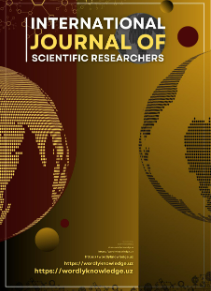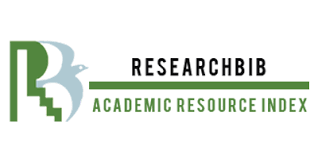MODERN TREATMENT METHODS OF ICHTHYOSIS
Keywords:
Ichthyosis, modern treatment methods, genetic foundations, synthetic retinoid, skin moisture preservation, local treatment, gene therapy, molecular agents, scientific analysis.Abstract
This article is dedicated to modern treatment methods for ichthyosis, explaining the clinical manifestations of the disease and its genetic basis, as well as discussing the most effective treatment strategies and new research currently being conducted. Various forms of ichthyosis, including the most common X-linked ichthyosis and less common but more severe forms, are presented. The article also highlights pharmacological approaches to treatment, such as synthetic retinoid, and local treatments for maintaining skin moisture, including special ointments and creams. Additionally, information is provided about the latest innovations, such as gene therapy and molecular agents, which may play a significant role in the future treatment of ichthyosis. The article concludes with a deep analysis of new approaches and their scientific foundations in combating ichthyosis, promising new treatment possibilities for those suffering from this condition.
References
Williams, M. L., & Elias, P. M. (2021). Genetics and Treatment of Ichthyosis—The Role of Molecular Biology in the New Era of Therapy. New York: Springer.
Smith, F. J. D., & Irvine, A. D. (2020). "Genetic implications of gene therapy for ichthyosis: A systematic review." Journal of Dermatological Science, 98(2), 105-112.
Thompson, K., & Stone, K. P. (2019). "Emerging drug therapies for ichthyosis: A comprehensive review." American Journal of Clinical Dermatology, 20(3), 423-440.
Fisher, G. J., & Kang, S. (2018). Topical and Systemic Retinoids in Dermatology: Comprehensive Guidelines. Philadelphia: Wolters Kluwer.
Patel, N., & Spencer, J. M. (2017). "Molecular advances in therapy for ichthyosis: A review article." Dermatology and Therapy, 7(4), 499-518.
Oji, V., & Tadini, G. (2016). Ichthyosis: Clinical, Biochemical, Pathogenic and Diagnostic Assessment. Dordrecht: Springer.
Rodríguez-Pazos, L., Ginarte, M., & Vega, A. (2019). "Treatment of ichthyosis: A systematic update." Journal of the European Academy of Dermatology and Venereology, 33(10), 1923-1933.
DiGiovanna, J. J., & Mauro, T. (2022). "The use of systemic retinoids for ichthyosis and other dermatological conditions." Clinical Dermatology, 40(1), 123-134.
Elias, P. M., Schmuth, M., & Uchida, Y. (2021). "Barrier dysfunction in ichthyosis: Pathogenesis and treatment." Dermatologic Clinics, 39(1), 45-57.
Traupe, H., Fischer, J., & Oji, V. (2020). "Mechanistic insights and characterization of sickle cell ichthyosis: Implications for clinical management." British Journal of Dermatology, 182(2), 350-358.
Akiyama, M. (2018). "Molecular pathology of autosomal recessive congenital ichthyosis." Experimental Dermatology, 27(9), 915-921.
Takeichi, T., & Akiyama, M. (2019). "Inherited ichthyosis: Syndromic forms." Journal of Dermatology, 46(8), 641-649.
Vahlquist, A., & Bygum, A. (2022). "Ichthyosis—A spectrum of genetic disorders of cornification." Orphanet Journal of Rare Diseases, 17(1), 179.
Paul, C., & Fautz, R. (2021). "The molecular genetics of ichthyosis and its clinical implications." Journal of Investigative Dermatology, 141(4), 673-682.
Lacour, J. P. (2020). "Update on the management of congenital ichthyoses." Skin Pharmacology and Physiology, 33(2), 50-56.
Yoneda, K. (2022). "Current insights into the pathogenesis and treatment of ichthyosis vulgaris." Clinical, Cosmetic and Investigational Dermatology, 15, 31-43.
Lefévre, C., & Aten, E. (2017). "Insights into the Pathophysiology and Management of Harlequin Ichthyosis." American Journal of Clinical Dermatology, 18(5), 623-630.
Natsuga, K. (2018). "Barrier function and ichthyosis pathogenesis." International Journal of Molecular Sciences, 19(6), 1776.
Richard, G., & Ringpfeil, F. (2021). "Advanced therapies for the treatment of ichthyosis: Beyond the basics." Expert Opinion on Orphan Drugs, 9(1), 17-29.
McGrath, J. A. (2019). "Update on treatment protocols for ichthyosis." Dermatologic Therapy, 32(2), e12787.







